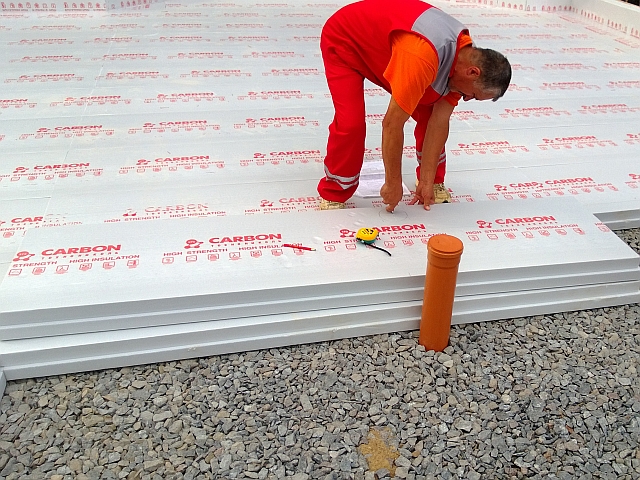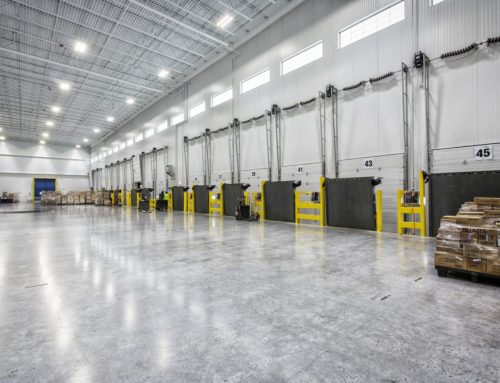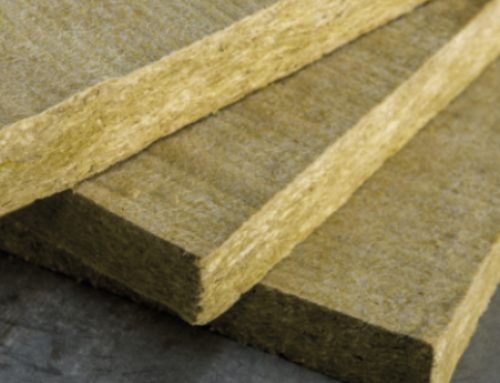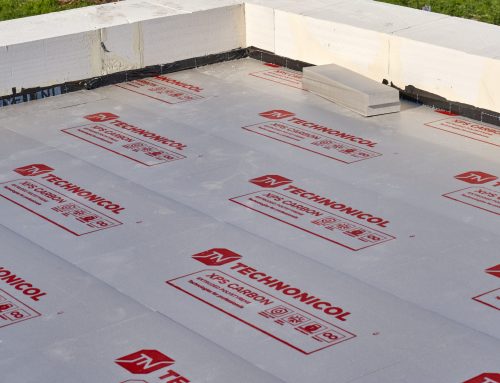The energy efficiency of a building often depends on the materials that create its envelope. Selecting the appropriate insulation type is crucial in delivering the required insulation performance for your project. Both extruded polystyrene (XPS) and expanded polystyrene (EPS) foam insulations are commonly used in construction applications. But what is the difference between EPS and XPS foams?
Production Process
Extruded polystyrene (XPS) and expanded polystyrene (EPS) are both foam polystyrene products used for insulation. Polystyrene is a versatile synthetic material, useful because it is inert (doesn’t react with other materials), lightweight, cost-effective, and long-lasting. When used to create foam insulation, it offers a high level of thermal efficiency and an impressive strength-to-weight ratio.
Extruded polystyrene (XPS) is manufactured using a process of extrusion. This continuous process results in a closed cell structure that prevents water penetration to the structure of the insulation board and provides long term strength and durability.
Expanded polystyrene (EPS) insulation is manufactured using beads of foam within a mould, with heat or steam then applied directly to cause the beads to expand and fuse together. This process produces a closed cell structure but not a closed cell insulation board, as uneven voids occur between the beads.
Compressive Strength
Compressive strength is a key requirement for challenging environments such as under slabs, foundations, and green roofs. When comparing XPS and EPS foam board densities, the compressive strength of XPS foam is typically much greater than that of EPS. For EPS foam insulation to achieve the same compressive strength performance as XPS foam, the density of the material would need to be increased.
Thermal Conductivity
Insulation is an essential and highly cost-effective way to improve a building’s energy efficiency. By improving the insulation in new and existing buildings, significant cost savings and reductions in energy usage can be achieved. Both XPS foam and EPS foam provide good thermal conductivity performance. However, the air trapped in the voids in the EPS conduct heat. XPS foam has a consistent long-term thermal resistance even in wet conditions and at very low temperatures.
Water Vapour Diffusion
Water vapour diffusion resistance (μ) of EPS foam ranges from around 30 to 70. XPS foam, on the other hand, has a water vapour diffusion resistance (μ) that ranges from around 80 to 250. This means XPS foam is better for wetter environments that require a higher water vapour diffusion resistance value.
Moisture that gets into tiny gaps of EPS foam will shrink and expand. This significantly impacts its performance as an insulator on top of causing early deterioration. Closed cell XPS foam is water repelling and capable of withstanding over 1000 freeze/thaw cycles, ensuring long term durability at a relatively low cost.
Technonicol XPS Foam – Resistant, Robust and Versatile Insulation
Technonicol offers thermal insulation boards made of high-quality extruded polystyrene. Technonicol’s Carbon XPS foam series comes in a variety of sizes, thicknesses, and compressive strengths to meet the demands of almost every application and is:
- Extremely durable
- Capable of bearing heavy loads
- Highly resistant to moisture
- Guaranteed to have low, stable, and predictable thermal conductivity
- Able to withstand the stresses of temperature changes and freeze/thaw cycles.
Related Questions
What does closed cell mean?
XPS foam insulation is a closed cell insulation, meaning there are no tiny voids or spacing between the polystyrene cells. This is achieved through a manufacturing process that involves extruding the polystyrene through a die. EPS foam, on the other hand, is produced by expanding the polystyrene cell, which can lead to tiny, irregular gaps. A completely closed cell construction is essential for reducing heat transfer and resisting water absorption and water vapour transmission.
Is XPS foam environmentally friendly?
XPS insulation is 100% recyclable and contributes enormously to reducing energy use. It lasts decades once installed, it significantly lowers the carbon footprint of the building over its lifespan.





Leave A Comment